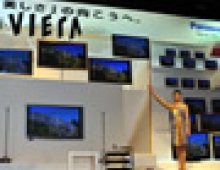
PSP not working at full power?
In the Game Developers Conference held in San Francisco, CA, Sony Computer Entertainment
America organized a presentation of the PSP, its hardware specs, software layer information,
etc. The demonstration however, showed that the device does not perform as was initially
announced.
The PlayStation Portable (PSP) has simple hardware architecture, yet includes many advanced
capabilities, which can be used to enhance games. The presentation started off with a system
overview, then delved into a number of these features, including: use of the VFPU, advanced
graphics techniques, wireless networking, integration with the front-end interface, and power
consumption. The session was designed for new PSP developers. The main speaker was Mr.
Mark DeLoura, Manager of Developer Relations, Sony Computer Entertainment.
The PSP CPU operates at 222MHz and not at 333MHz, as was reported in its specifications sheet. In addition, the OS kernel occupies 8MB of the main memory on the device (32MB), which is a very high utilization. There is no doubt that the PSP cannot perform to full potential yet.
Regarding the 222MHz speed for the core CPU, Sony explained that it was no use to push the device to its 333MHz limit, since the current typical bus speed of the PSP is not higher than 111MHz. Working at 333MHZ would require an increase in the bus speed to 166MHz. The 222MHz is a provisional specification, and there is a possibility of increasing it to 333MHz in the future.
Although the official explanation from Sony on the CPU clock was not convincing, it is clear that the purpose of the low operating frequency is an effort towards reducting power consumption. The Lithium Ion battery of 1,800mAh powering the PSP offers 4-6 hours operation at 222MHz. In addition, the attached UMD drive, the high luminance settings, the wireless LAN support as well as the liquid crystal display are factors that impact highly on power consumption.
Regarding the PSP's OS, the biggest issue is that the kernel itself occupies 8MB of memory. This is a huge amount used for kernel, leaving just 24MB free for the user and of course the game developer.
The reason for occupying such a large chunk for the kernel is that the device will be able to support many different functions. The library layer and drivers for example are relatively large because the PSP basically handles the API base programming model.
The UMD file format was also explained in the GDC. Currently, there is one format for PSP games, another one for UMD Audio, and one for UMD Video. Although there was no mention about any regional code control for PSP games, both UMD audio and video are expected to be digitally controlled.
The PSP CPU operates at 222MHz and not at 333MHz, as was reported in its specifications sheet. In addition, the OS kernel occupies 8MB of the main memory on the device (32MB), which is a very high utilization. There is no doubt that the PSP cannot perform to full potential yet.
Regarding the 222MHz speed for the core CPU, Sony explained that it was no use to push the device to its 333MHz limit, since the current typical bus speed of the PSP is not higher than 111MHz. Working at 333MHZ would require an increase in the bus speed to 166MHz. The 222MHz is a provisional specification, and there is a possibility of increasing it to 333MHz in the future.
Although the official explanation from Sony on the CPU clock was not convincing, it is clear that the purpose of the low operating frequency is an effort towards reducting power consumption. The Lithium Ion battery of 1,800mAh powering the PSP offers 4-6 hours operation at 222MHz. In addition, the attached UMD drive, the high luminance settings, the wireless LAN support as well as the liquid crystal display are factors that impact highly on power consumption.
Regarding the PSP's OS, the biggest issue is that the kernel itself occupies 8MB of memory. This is a huge amount used for kernel, leaving just 24MB free for the user and of course the game developer.
The reason for occupying such a large chunk for the kernel is that the device will be able to support many different functions. The library layer and drivers for example are relatively large because the PSP basically handles the API base programming model.
The UMD file format was also explained in the GDC. Currently, there is one format for PSP games, another one for UMD Audio, and one for UMD Video. Although there was no mention about any regional code control for PSP games, both UMD audio and video are expected to be digitally controlled.



















